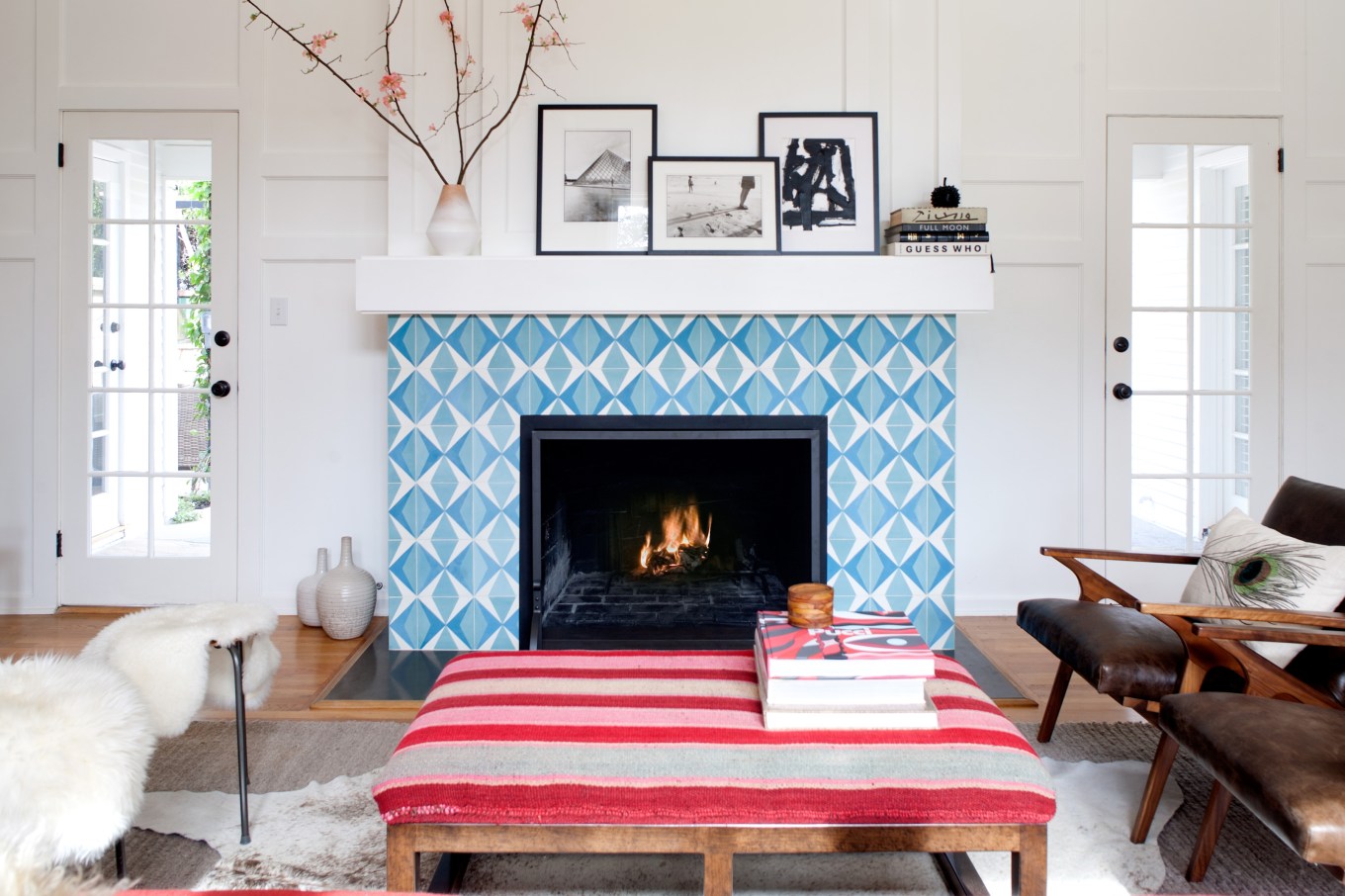An old-fashioned fireplace isn’t only an inefficient heating source, it also can create high levels of smoke inside and outside your home.
But an energy-saving wood, pellet or gas insert lets you transform your existing hearth into a super-efficient heater that can cut your energy bills — by as much as 40%, says Leslie Wheeler of the Hearth, Patio, & Barbecue Association.
The main difference is what’s important to you: burning real wood and having heat even if the power goes out (wood insert), burning a bio-fuel without the hassle of wood (pellet stove), or flipping on fast heat in a specific area of the house (gas).
The Benefits of a Wood-Burning Insert
A wood-burning insert slides into your existing masonry or metal fireplace and burns real logs.
Your installer snakes a stainless steel liner down your chimney and fits a decorative flange made of black cast iron or steel or colored porcelain around the insert, hiding its steel sides and filling the gap between the box and your hearth.
A front door with ceramic glass radiates heat into the room. You open the door to stack the wood, then shut it, on most models, while your fire is burning. Most wood-burning inserts also create convection heat with a fan located underneath the firebox.
Wood-burning inserts can heat anywhere from 1,000 to 3,000 sq. ft., depending on their size. Inserts are small enough to fit into most traditional masonry fireplaces.
An insert designed to heat 1,500 square feet will burn for three to five hours before you need to reload; for 1,500 to 3,000 sq. ft., you usually have an eight- to 10-hour burn window.
The cons:
- You still have to stack and load wood.
- The insert can be dangerous in a prefab fireplace. “The prefabricated chimney isn’t rated to take the temperature that a wood insert can put out. You need a chimney rated for 2,100 degrees,” says John Mountford, a salesperson at Fireside Warmth in Kingston, N.Y. If you have a prefab, many dealers will recommend replacing the entire fireplace with a high-efficiency wood burning fireplace rather than use an insert.
The Benefits of a Pellet Insert
This prefabricated convection heater slides into your existing fireplace — prefab or masonry. Instead of loading logs, you pour in pellets — rabbit-food-sized bits of compressed, recycled wood waste and other renewable substances.
Just like the wood insert, a pellet insert is a sealed combustion box with a partially glass front door, and is surrounded by a decorative flange. It vents through your existing masonry chimney. To operate the system, buy a bag of pellets, pour it in, press a button, and have fire. On some, you just set the thermostat and let the stove do the rest.
Unlike a wood-burning insert, pellet stoves need electricity — to start the fire, operate the blowers, run the auger feeding the pellets to the burn pot, and run the computer board monitoring the system.
Pellet stoves can heat 1,000 to 2,500 sq. ft., depending on their heat-generating capacity and the size of the fuel hopper.
Among the cleanest-burning home heating appliances, it uses waste products to create energy. Some stoves can burn alternative fuels such as dried cherry pits, which you can buy in 40-pound bags from hardware and home stores.
The cons:
- Weekly maintenance, such as removing the ash, cleaning the glass, and dusting the electronics.
- If the power goes out, your pellet insert will, too, (though some have battery backup).
- A 40-pound bag of pellets runs about $4 to $10, and the average household burns about a bag a day for 1,500 sq. ft.
- Pellet inserts also lack the off-the-grid romance of heading out back and hacking down fuel yourself.
The Benefits of a Gas Fireplace Insert
Today’s gas inserts are heat-producing dynamos that use propane or natural gas to power a steady flame dancing on fake logs, decorative modern glass chips, or stones behind a sealed glass face.
Gas inserts can be used in masonry or prefab fireplaces; they can be vented through the existing chimney (or a wall for a free-standing unit).
Gas is the easiest insert to use and requires very little maintenance beyond the annual check. Flip a switch; have fire. Its best application is for zone heating—turning up the gas in the room you’re in and lowering the thermostat in the rest of your house.
Green Factor: 58% to 85% efficiency rating, says HPBA; very little pollution, smoke, ash, or creosote. Zoned heating allows you to reduce overall fuel consumption.
The cons:
- Unlike pellet inserts, burns fossil fuel, making it unattractive if you’re eager to reduce your carbon footprint.
- Doesn’t offer the snap, crackle, pop, or aroma of a wood fire.
- Ventless versions burn very clean — they have to, because they also release pollutants into your home. In fact, some states don’t allow ventless systems.
Related: Ideas to Make Over Your Fireplace
